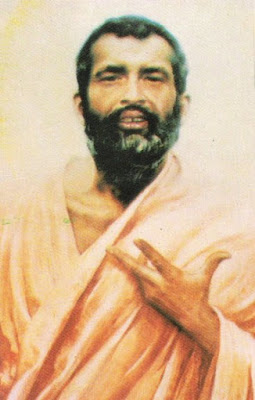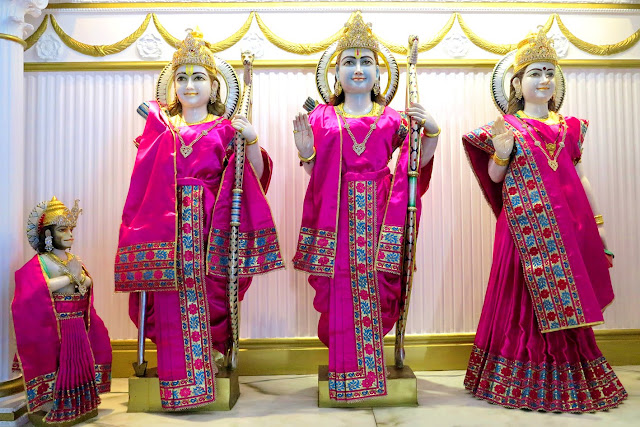Ramakrishna Jayanti 2020 - Ramakrishna Paramahamsa Childhood - Birth stories - spiritual struggles - spiritual maturity - world mission - Ramakrishna Paramahamsa Biography
Ramakrishna Paramahamsa Biography
Ramakrishna Jayanti 2020: February 18, 1833
Kamapukur, India
Died: August 16, 1886
Calcutta, India
Sri Ramakrishna was an Indian spiritualist (one whose strict convictions are bolstered otherworldliness and practices outside of conventional religion), reformer, and holy person who, in his own lifetime, came to be hailed by individuals of all classes as a profound exemplification (taking on the physical type) of God.
 |
| Ramakrishna Paramahamsa |
Ramakrishna Paramahamsa Childhood
Born during a rural Bengal village in India, Sri Ramakrishna was the fourth of 5 children. His parents were simple but traditional Brahmins (Hindu religion) deeply committed to the upkeep of traditional religious piety, or religious devotion. Legend has it that when Ramakrishna's father, Khudiram, made a pilgrimage (religious journey) to the sanctum of Gaya, he had a vision of the Hindu god Vishnu, who told Khudiram he would be resurrected (take the type) of his next child. Similarly, Ramakrishna's mom, Chandra Devi, had dreams that her next conceived would be a perfect (god-like) youngster. In no time a while later, Chandra Devi brought forth Sri Ramakrishna.
As a child, Ramakrishna didn't like routine schoolwork and never learned to read or write. Instead, he started to show profound characteristics well past his years, including encountering seriously happy encounters, long periods of thought, and spiritual absorption within the sacred (holy) and traditional Indian plays, particularly with the jobs of the divine beings Shiva and Krishna. During his formal initiation ceremony into the Brahmin caste (an Indian social class), he shocked his high-caste relatives by openly accepting a ritual meal cooked by a lady of low caste.
Despite the fact that Ramakrishna opposed customary holy investigations, at sixteen years old he visited Calcutta, India, to support his sibling, who was filling in as a minister for assortment of neighborhood families. He was disturbed by the gross business practices and inhumanity of the town environment. However, when his brother was asked to become a priest at an outsized temple complex at Dakshineswar near the Ganges outside Calcutta, Ramakrishna found a replacement and ultimately permanent environment for his spiritual growth and teaching.
You guys Shiva temple for centuries villagers are worshipping Lord Shiva at this temple Chandra Devi mother of Shri Ramakrishna used to visit this temple regularly one day Chandra Devi came to pay tribute to Lord Shiva along with Tony at this temple and she had a divine vision she saw that
suddenly a celestial light emanated from Shiva filled the entire temple and swiftly entered her body taken by surprise and overpowered with fear she fainted Tony Kumari nee nursed her and when she
regained consciousness she felt the light was still in her belly and that she had conceived this was the divine origin of Sri Ramakrishna according to the English calendar God at heart was born twelve minutes before sunrise on Thursday the 18th of February 1836 according to the Hindu calendar which
reckons the day from sunrise to sunrise it was Wednesday the 6th of Phalguna in the Bengal year twelve hundred and forty-two at that time a shared stood here this was meant for the husking
machine there was by its side and oven and for boiling paddy soon after the child was born when the
nurse and Honi after attending to the mother looked for the child it was missing it had slipped into the oven and become the smeared with ashes and still did not make any sound a portent of his future life of renunciation the altar of the present temple of Shri Ramakrishna was constructed at the very spot of his birth and engraved on it one sees a husking machine a fireplace and a lamp reminding us of the events of his birth
 |
| Ramakrishna Paramahamsa |
Ramakrishna Paramahamsa spiritual struggles
That temple complex—one of the foremost impressive within the area—had been built by a wealthy widow of low caste whose spiritual ideal (standard) was the mother goddess Kali. This great deity (god) traditionally combines the terror of death and destruction with universal motherly security and is often represented in a statue of ferocious appearance. She represents an immense variety of religious and human emotions, from the most primitive to the highest forms, and therefore has a symbolic universality not easily contained within traditional religious forms.
Ramakrishna was selected to function priest within the Kali temple, and it had been here that he had a series of important religious experiences during which he felt that Kali was calling him to a universal spiritual mission for India and every one mankind. His untraditional and sometimes bizarre behavior during this era of spiritual transformation was interpreted by many as a symbol of madness. However, it clearly represented his struggles to free himself from routine religious patterns and to realize a replacement and deeper spirituality. He imitated the actions of the god-monkey Hanuman (a sign of humility and service); he fed animals from the same food prepared for Kali (a disrespect to the traditionalists); he cleaned an outcaste's hovel (the shack
Sri Ramakrishna.of a person expelled from his or her caste) with his hair, a terrible insult for a Brahmin; he sang and danced wildly when the spirit moved; and he dismissed his Brahminical status, accepting that rank prevalence brought down the character of his otherworldliness. These demonstrations symbolized his internal profound change.
Ramakrishna Paramahamsa spiritual maturity
When Ramakrishna was twenty-eight his emotional confusion eased, and he began to review a good sort of traditional religious teachings. His teachers were impressed together with his ability to find out , his amazing memory, and his remarkable talent for spiritual skill. He was openly hailed as a supreme sage, one who is regarded for his wisdom and knowledge . At the age of thirty-three he began to review Muslim tradition, and after a brief period of instruction he had a vision of a "radiant figure"—interpreted because the founder of Islam Mohammed (c. 570–632) himself, which solidified his universal religious calling.
In 1868 Ramakrishna undertook an in depth pilgrimage; but despite the honors given to him he was saddened by the poverty (extremely poor conditions) of the masses and commenced living with outcaste groups to bring awareness to their situation, insisting that his rich patrons (supporters) make formal efforts to enhance their condition. He was always a person of the people: simple, filled with warmth, and without snobbishness or religious dogma (system of beliefs).
Ramakrishna Paramahamsa world mission
By now Ramakrishna had a good following from all classes and groups. He wasn't merely an excellent teacher; he was considered a physical sort of the sacred source of Indian religious tradition and of the universal ideals toward which all men strive. His spiritual energies and attractive personality were combined with a sharp sense of humor—often aimed at himself or his disciples (followers) when the hazards of pride and self-satisfaction seemed impossible to avoid.
During the last decade of his life, one among the foremost important events was the conversion of his disciple Vivekananda (1863–1902), who was destined to arrange and promote Ramakrishna's teachings throughout India, Europe, and the United States. In 1886, when Ramakrishna was close to death, he officially assigned Vivekananda his otherworldly beneficiary, or one who assumes control over his lessons.
Ramakrishna's teachings do not appear in any clear form. He wrote nothing. His disciples recorded his words only within the context of the spiritual force of his personality, and thus in collected form these sayings have the character of a gospel—a message of salvation centered within the spiritual teachings of his own life. He rejected all efforts to worship him personally; rather, he suggested that his presentation of man's spiritual potential function a guide and inspiration to others. Above all, Ramakrishna had a "grass-roots" appeal equaled by few others in any religious tradition, marked by his love of all men and his enthusiasm for all sorts of spirituality.



Comments
Post a Comment